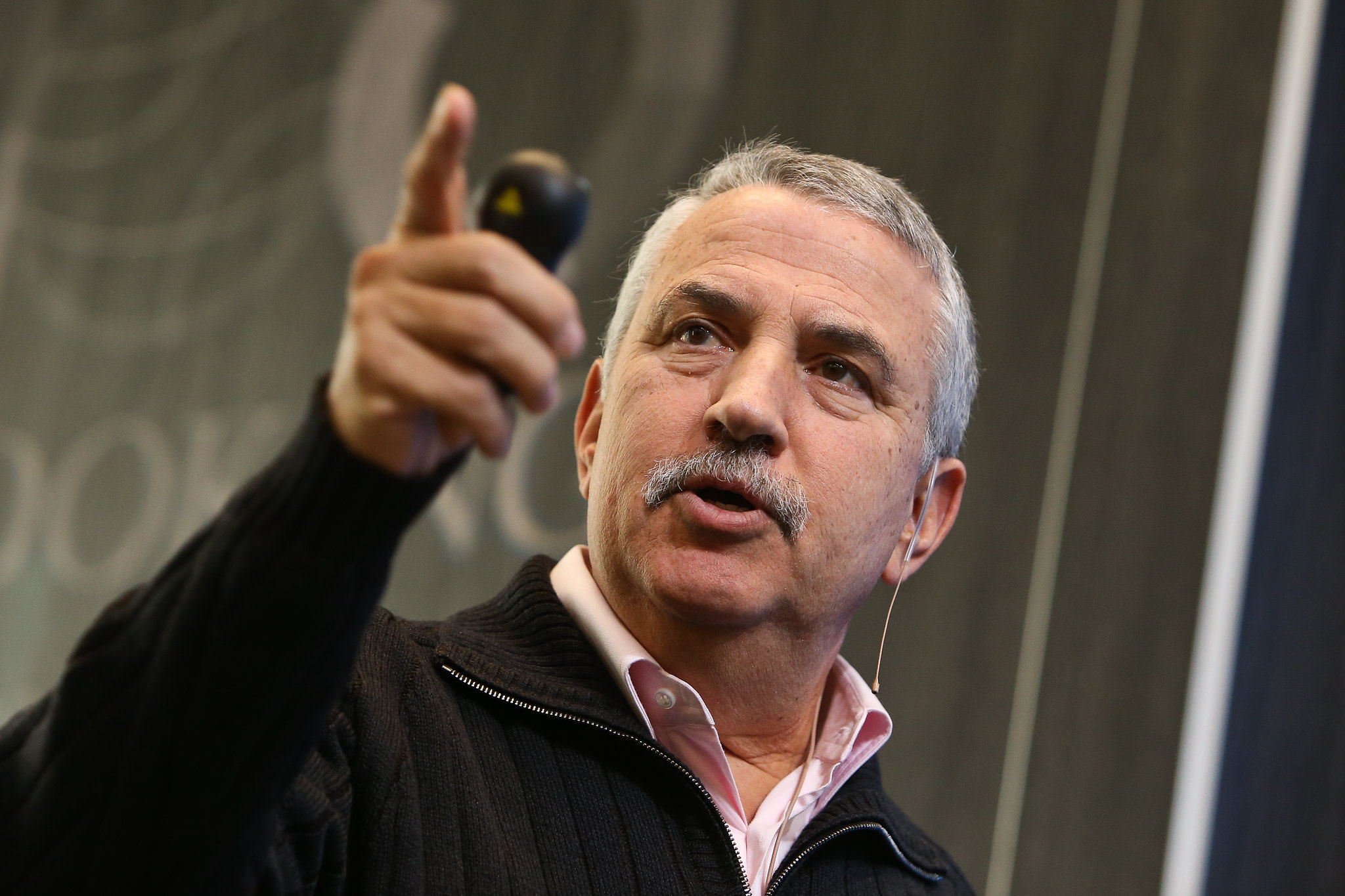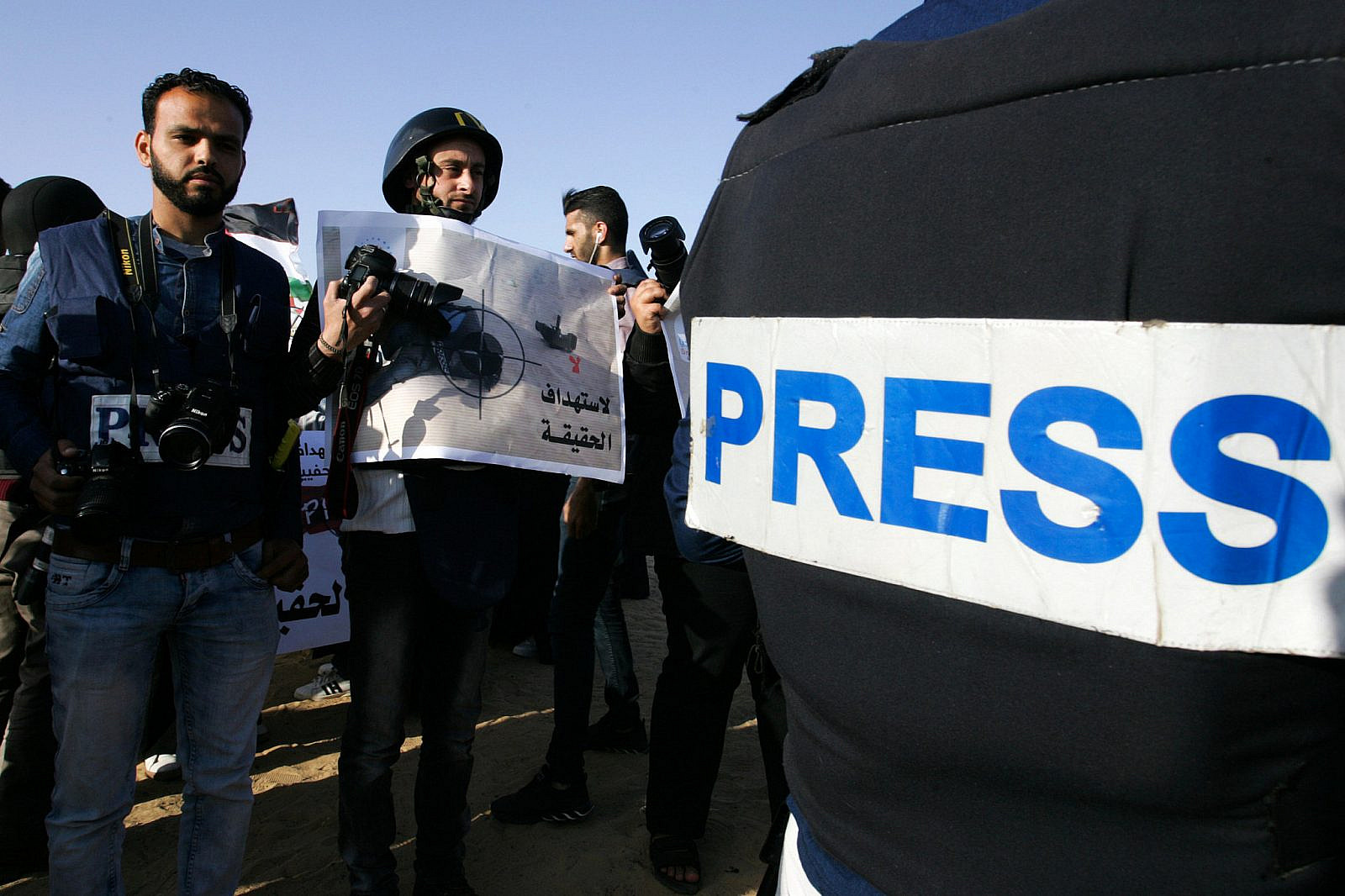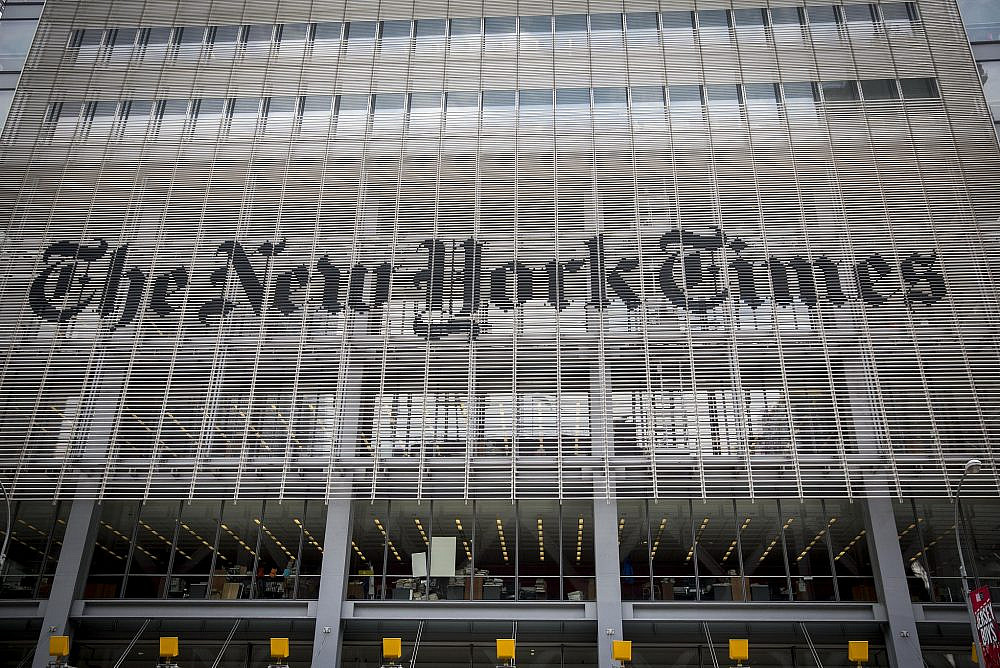Last Saturday, The New York Times editorial board made headlines when it published an article titled, “The Ideal of Democracy in a Jewish State Is in Jeopardy.” While reiterating its support for Israel and for a two-state solution, the editorial warned that the new Israeli government — which is to be led by the right-wing Likud party and includes far-right partners such as Religious Zionism, Otzma Yehudit (Jewish Power), and the anti-LGBTQ Noam — represents a “significant threat” to the country’s future, and “could make it militarily and politically impossible for a two-state solution to ever emerge.”
Responding via Twitter, incoming Prime Minister Benjamin Netanyahu took offense to what he described as the board’s “ill-founded advice.” Accusing the newspaper of “demonizing Israel for decades,” he blasted the editorial as an attempt to undermine his elected government and to “delegitimize the one true democracy in the Middle East and America’s best ally in the region.”
Despite the editorial’s important recognition of the dangers of Israel’s far-right coalition, as a longtime reader (and critic) of The New York Times, I still found the article to be a perfect reflection of the blind spots that still plague America’s “newspaper of record.” Indeed, the board’s stubborn refusal to incorporate Palestinian perspectives into its editorials, despite deafening calls to do so, leads it to fundamentally misread the reality on the ground and, consequently, leaves the newspaper with a woefully outdated understanding of Israel-Palestine.
Groupthink and ‘bothsidesism’
Two years ago, I published an analysis on +972 documenting the historic exclusion of Palestinian voices from the opinion pages of four major American newspapers and magazines: The Washington Post, The Nation, The New Republic, and The New York Times. While the Times wasn’t the worst offender, its track record was nonetheless abysmal. Of the 2,490 opinion pieces about Palestinians that the paper published between 1970 and 2019, only 46 were written by Palestinians — an average of less than 2 percent.
What about the other 98 percent? According to the databases I consulted, the vast majority were written by the paper’s columnists and members of the editorial board. It’s hard to know where one group’s views end and the other’s begin; that’s because, according to the Times’ website, the editorial board “is made up of opinion journalists who rely on research, debate and individual expertise to reach a shared view of important issues.” (It is telling that Sunday’s editorial cited a recent op-ed by Thomas Friedman, a longtime columnist and commentator on the Middle East, which echoed much of the board’s positions.)

Given this overlap between the opinion journalists and the editorial board — and the lack of Palestinian or Arab columnists among them — it’s not surprising that a kind of groupthink has emerged there. And this groupthink consistently places Israel, Israeli framings, and Israeli perspectives above those of Palestinians.
A keyword search of the Times’ editorials that discuss Palestinians bears this out. Between 1970 and 2019, the word “peace” appeared 1,112 times, but “justice” only appeared 86 times; “terror” was mentioned 649 times, but “occupation” only 219 times; “Israel’s security” was invoked 90 times, but “Palestinian freedom” was mentioned just three times. While keyword searches alone do not tell the whole story, they do help us get a sense of the overall tenor of the Times’ coverage: over the last five decades, Israel has been unquestioningly presented by Times editors as a close ally, while the Palestinians have been consistently framed as a “problem.”
But for Palestinians — and for their allies in the region and around the world — Palestine isn’t some “problem” for Israel to sort out, but a cause to fight for. Since 1948, the Israeli state has prevented Palestinians from living in their homeland with freedom and dignity, whether by banning refugees from returning to their homes, discriminating against Palestinian citizens inside Israel, or keeping millions of Palestinians under military occupation. If there is a problem to be solved, that regime is the problem.
This simple fact seems to have eluded the Times’ editorial board. Rather than recognize the systemic violence, discrimination, and colonization perpetrated by Israel against Palestinians, the board blames “both sides” for a vastly asymmetric situation. For example, Saturday’s editorial attributes the rightward shift of the Israeli electorate in part to “genuine concerns about crime and security, especially after violence between Israeli Arabs and Jews last year.” It makes no mention of the Israeli police violence that Palestinian citizens were subjected to during that time — sometimes in partnership with vigilante militias, including from West Bank settlements — nor the campaign of mass arrests and collective punishment against Arab communities in the months afterward.
Likewise, the editorial claims that “hopes for a Palestinian state have dimmed under the combined pressure of Israeli resistance and Palestinian corruption, ineptitude and internal divisions.” This “bothsidesism” may give the appearance of balance, but it doesn’t reflect a reality in which Israel holds almost total political, economic, and military power over the lives of every Palestinian, in a system that growing numbers of scholars, human rights groups, and legal experts are defining as apartheid.

Take, for example, the fact that hundreds of Palestinian homes are demolished by Israeli bulldozers every year to make way for Jewish settlements, but not the other way around. Or that hundreds of Palestinians are under threat of being dispossessed of their land because of an Israeli military “firing zone,” but Israeli residents have no such fears. Or that Palestinians in the occupied territories have to cross militarized Israeli checkpoints with Israeli-issued permits or IDs, but no Israeli has to cross a Palestinian checkpoint. Or that hundreds of thousands of Palestinians have been arrested and detained in Israeli prisons since 1967, but there is no such system of mass incarceration forced upon Israelis. Or that Israeli military courts convict Palestinians at a rate of over 99 percent, but not a single Israeli has had to stand trial in a Palestinian court of law. There are no “both sides” here.
Advancing a justice framework
This stubborn insistence on blaming both sides is reflective of a deeply flawed “peace framework” that has dominated international understanding of Israel-Palestine for decades. This framework centers on identity politics and ignores the structural violence that the state perpetrates against oppressed groups. It instead focuses on acts of spectacular violence committed by those groups in response to the oppression they face, blames them for escalating conflict, then uses it to justify the repressive violence meted out by the more powerful forces.
Many of the Times’ editorials of the last 30 years, since the advent of the Oslo Accords, have been steeped in the peace framework. They treat Israelis and Palestinians as having equal power when they clearly don’t. They praise Israel for minor adjustments to its daily structural violence against Palestinians, but scold Palestinian leaders and society for acts of violence done in turn. If the Times’ editorial board sounds outdated today, that is because its worldview remains stuck in the 1990s.
More recently, we are seeing the re-emergence of what can be called the “justice framework.” This framework pays closer attention to all forms of structural violence that communities face, regardless of their identity. Rather than speaking about people as problems, proponents center the experiences of the oppressed and work to dismantle the structures working against them.
The above framework is becoming more salient in the United States, thanks to the work of social justice groups and movements like Black Lives Matter. These forces have prompted liberal stalwarts like The New York Times to pay closer attention to whose voices are being included and whose continue to be marginalized. Such principles are slowly seeping into how American media outlets are covering Israel-Palestine, too. We saw this on display during the events of May 2021: of the 27 opinion pieces published in the Times that month, six were by Palestinians, including Jerusalem-based filmmaker Rula Salameh and Gaza-based writers Refaat Alareer and Basma Ghalayini.

To its credit, the Times has recently hired more Palestinian and Arab reporters, including Hiba Yazbek and Raja Abdulrahim. Their reporting has been crucial in bringing Palestinian voices, experiences, and perspectives to readers who would otherwise not access them. The Times has also continued to publish op-eds by Palestinians, including two recent pieces by Haifa-based Palestinian attorney Diana Buttu and one by Al-Haq’s general director Shawan Jabarin.
It is great to see more Palestinian representation in the news division and on the op-ed pages. But these changes don’t go far enough, so long as most of the opinions platformed in the Times continue to be produced by pro-Israel liberals like Thomas Friedman and conservatives like Bret Stephens. As we saw with Saturday’s editorial, when it comes to Israel-Palestine, the Times’ boardroom still suffers from the absence of Palestinian voices. And as a result, its members are still clinging to old and discredited myths about Israeli democracy and a two-state future.
The Times editorial board has long been behind the times when it comes to recognizing what’s happening on the ground in Israel-Palestine. As their positions become ever more fanciful, perhaps the board members will finally listen — really listen — to what Palestinians have been saying all along.

